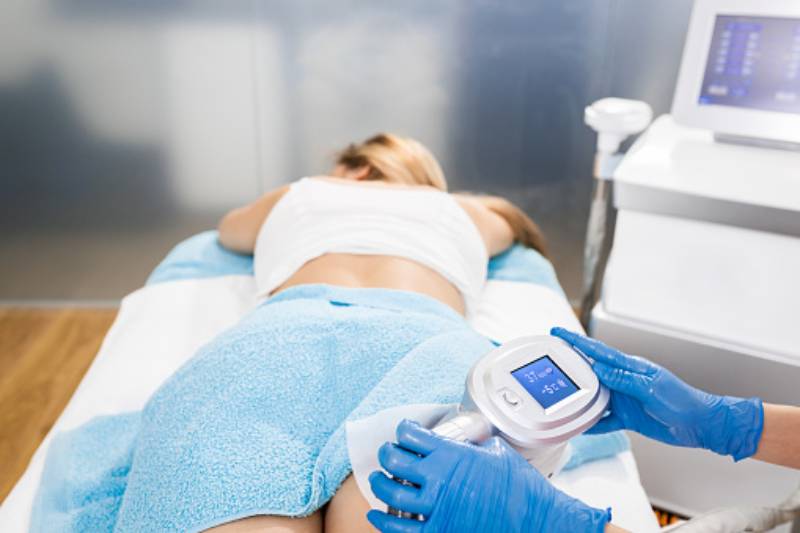As an AI language model, I don’t have a physical body and therefore cannot undergo any cosmetic procedures, including fat freezing. However, I can provide some general information on who may be a good candidate for this procedure.
Fat freezing, also known as cryolipolysis, is a non-surgical method of reducing stubborn fat pockets in areas such as the abdomen, thighs, and love handles. The treatment works by freezing the fat cells, which are then eliminated by the body’s natural metabolic processes.
Ideal candidates for fat freezing are typically individuals who are already at or near their ideal body weight but have areas of stubborn fat that are resistant to diet and exercise. Fat freezing is not a weight loss solution and should not be used as a substitute for a healthy lifestyle.
It’s important to note that not everyone is a good candidate for fat freezing. People with certain medical conditions, such as cryoglobulinemia, cold agglutinin disease, or paroxysmal cold hemoglobinuria, may not be suitable for the procedure as the extreme cold temperatures can exacerbate these conditions. Additionally, pregnant or breastfeeding women should not undergo fat freezing.
Before considering any cosmetic procedure, it’s important to consult with a qualified healthcare professional to determine if you are a good candidate and to discuss the potential risks and benefits.

Signs That Fat Freezing is For You
Fat freezing, also known as cryolipolysis, is a cosmetic procedure that can help reduce stubborn pockets of fat in certain areas of the body. While it’s important to consult with a qualified healthcare professional to determine if you are a good candidate for the procedure, here are some signs that fat freezing may be a suitable option for you:
- You have stubborn areas of fat that are resistant to diet and exercise: Fat freezing is designed to target areas of the body where fat is difficult to lose through traditional weight loss methods.
- You are already at or near your ideal body weight: Fat freezing is not a weight loss solution and should not be used as a substitute for a healthy lifestyle. Ideal candidates for fat freezing are typically individuals who are already at or near their ideal body weight but have areas of stubborn fat.
- You want a non-surgical alternative to liposuction: Fat freezing is a non-invasive alternative to liposuction that does not require anesthesia, incisions, or a lengthy recovery period.
- You are looking for a safe and effective way to reduce fat: Fat freezing is a safe and effective way to reduce fat in certain areas of the body. However, it’s important to note that the procedure is not suitable for everyone, and it’s important to consult with a qualified healthcare professional before undergoing any cosmetic procedure.
- You have realistic expectations: While fat freezing can help reduce stubborn pockets of fat, it’s not a miracle cure. It’s important to have realistic expectations and understand that the results may vary from person to person.
Is Fat Freezing Safe Post-Pregnancy?
Fat freezing, also known as cryolipolysis, is a cosmetic procedure that can help reduce stubborn pockets of fat in certain areas of the body. While fat freezing is generally considered safe for most people, including those who have recently given birth, it’s important to consult with a qualified healthcare professional before undergoing any cosmetic procedure.
In general, it’s recommended to wait at least six months after giving birth before undergoing any cosmetic procedure, including fat freezing. This is because the body needs time to heal and recover from pregnancy and childbirth before undergoing any additional stress.
Additionally, it’s important to note that fat freezing is not a weight loss solution and should not be used as a substitute for a healthy lifestyle. It’s important to maintain a healthy diet and exercise regimen to achieve and maintain optimal results.
During a consultation with a qualified healthcare professional, you can discuss your individual health history, goals, and concerns to determine if fat freezing is a safe and suitable option for you post-pregnancy. They can also provide recommendations and guidance on timing and other factors to consider.
What can’t fat freezing remove effectively?
Fat freezing, also known as cryolipolysis, is a cosmetic procedure that can effectively reduce stubborn pockets of fat in certain areas of the body. However, it’s important to note that there are some limitations to what fat freezing can effectively remove.
Fat freezing is not a weight loss solution and is not designed to treat obesity. It’s most effective for individuals who are already at or near their ideal body weight but have areas of stubborn fat that are resistant to diet and exercise.
Additionally, fat freezing is not effective for reducing visceral fat, which is the fat that surrounds the organs in the abdominal cavity. Visceral fat is linked to an increased risk of health problems such as heart disease, diabetes, and certain cancers.
Fat freezing is also not effective for tightening loose skin. If you have loose or sagging skin, you may need to consider other cosmetic procedures such as a tummy tuck or skin tightening treatments.
Finally, fat freezing is not suitable for everyone. People with certain medical conditions, such as cryoglobulinemia, cold agglutinin disease, or paroxysmal cold hemoglobinuria, may not be suitable for the procedure as the extreme cold temperatures can exacerbate these conditions. It’s important to consult with a qualified healthcare professional to determine if fat freezing is a suitable option for you.
